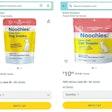
The essential goal of commercial pet food is to provide complete and balanced nutrition for companion animals. In that sense, health has always been a guiding attribute of pet food. However, health and wellness have expanded beyond basic nutrition as pet owners seek to improve pets' quality of life and longevity. The COVID-19 pandemic further fueled interest in foods that boost health and resilience. Considering the importance of health and wellness claims as one of the dominant trends in pet food, a group of researchers at Kansas State University studied which specific characteristics related to pet owners’ paying more for a product.
Price premiums and discounts on pet food
The scientists identified three attributes associated with price premiums and three with price discounts. Attributes related to 1. digestion, 2. skin and coat and 3. immune support had higher prices relative to other products. The highest price premium associated with a health attribute was allergy relief, which had a 14.5% to 22.7% premium when included in a product.
“This implies that there is a potential for pet food companies to increase their product revenue by offering products that include these product attributes at a premium,” the researchers wrote in AgEcon Search. They presented their results at the 2024 Agricultural and Applied Economics Association annual meeting held in New Orleans, Louisiana, USA on July 28-30. Lonnie Hobbs Jr., assistant professor of agricultural economics at Kansas State University, led the team.
On the other hand, price discounts were associated with attributes related to muscle and joint, dental, and vitamins/minerals.
“The discounts associated with these attributes potentially indicate the presence of said attributes in lower quality and/or priced products,” the researchers wrote. “However, the approach in this study fails to identify if the variation in price premiums is motivated by supply chain cost to produce the attributes and/or customer demand for said product attributes. Therefore, further research is needed to isolate these effects and provide further clarification on the ‘why’ driving the differences in prices.”
The researchers’ analysis used a dataset of retail price information obtained from Chewy.com, including retail prices, brand information, product type and form, packaging size, primary ingredients and health-related attributes for 1,598 dry dog food products listed on Chewy's website as of January 3, 2023.

















